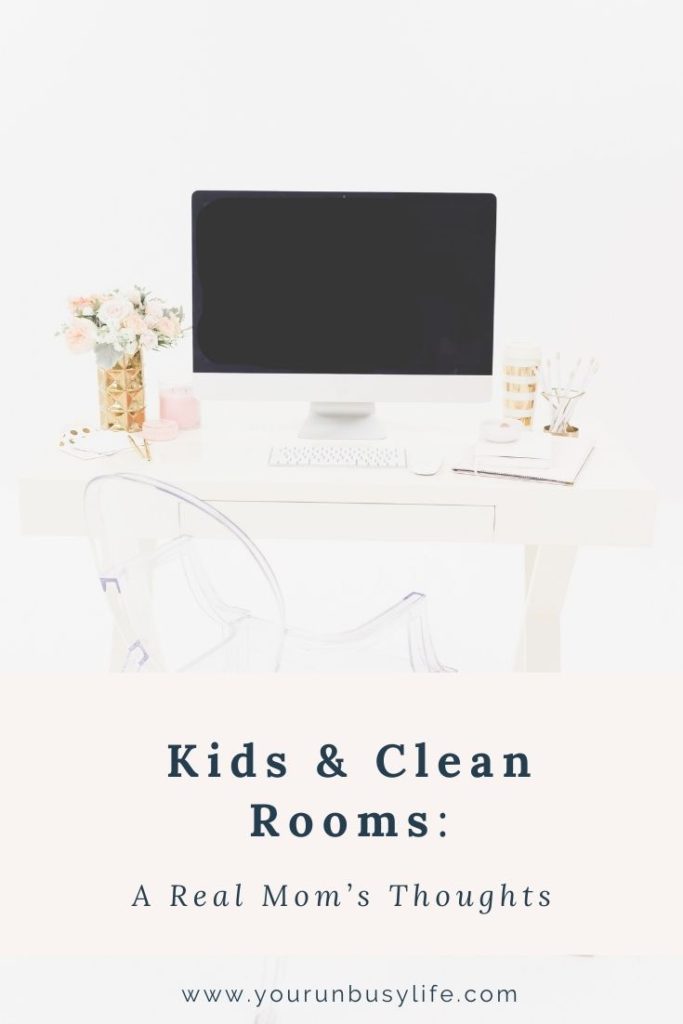
Have you ever felt like you and your kids must have a cosmic language mismatch when you say the words “pick up?”
They seem to hear “pick up a few things” or “pick up at some point today.”
They certainly don’t hear, “You have 20 minutes to get this room in tip-top order!” (Which is what you’re really meaning.)
So how can you help them help you? (I.e., turn into responsible picker-uppers?)
Here’s a simple 3-step process that I use in my own home to train those little kid helpers. (Willing or no!)
Which standards: yours or theirs?
First of all, we need to get clear on one thing: Are you going to train them to your standards, or accept kid-level results?
- If you expect your results but leave them to do it alone, you’ll be frustrated (mismatch of expectations + outcome).
- If you expect kid-level results and that’s what you get, you’re happy.
- And if you expect your tidy-up standards to be met, and you put in the oversight effort to make sure they get there, you’ll also be happy with the result.
So decide upfront: which level of room tidiness are you okay with?
You might as well eliminate the too-high expectations if you haven’t got the time to teach your daughter how to fold nicely, put like toys with like, and make her bed.
On the other hand, if you just want the floor cleared off and the toys in the bins, you don’t mind if your son chucks random toys in the duplo container and all the cars in with the legos.
You just wanted to see the floor again. (And you did.)
See the difference?
Remember, no guilt allowed on whose standards you choose.
I just want you to be clear in your own mind what you’re expecting from those kiddos.
What level of room tidiness are you okay with?
It’s not fair!
Now, on to the mom-favorite fairness discussion: How do you make sure one kid doesn’t get off scot-free while the responsible ones do all the work?
Here’s my suggestion: Divide the room pick-up chore by sets. (‘Cause they always have multiple set outs, am I right?)
You can also subdivide by colors in a set (say, all the red blocks from your 150-piece wooden block set).
This way, you glance over the room and quickly hand out assignments: two sets per kid, and the single teddy bear on the floor does not count as a “stuffed animals” set!
(Yes, there will be a race to claim the easiest groups – feel free to assign an additional tidy-up group to the kid who picked all the easy ones.)
And while we’re on the subject of kids taking the easy way out….
Ensuring participation
Let’s talk about the nitty gritty: How do you get all the kids to pick up?
Simple – but not always easy.
You’re going to get all the kids helping (age three-and-a-half and up, both genders, making sure to include the not-as-responsible or poky ones!).
Don’t let your slow-as-molasses daughter get out of room pickup because she habitually takes an hour to do her two sets.
Don’t make a habit of letting your tidy-up tornado son rescue his siblings (yes, he’s just being nice; no, they have to learn it for themselves) when he’s done and they can’t play with him yet.
Let them feel the real-world consequences.
“You want to play a game of Uno with mommy? Fine. I’d love to. But only when your room is picked up. You have thirty minutes, and after that mommy needs to cook supper.”
Whoever’s done with their sets in thirty minutes gets to play. Everyone else?
They’ll remember next time you announce “pick up time!” that they might lose out on treats if they don’t get going.
So yes, momma.
You can have a (pretty) clean house, one that your kids helped with.
You’re just going to have to train them how to do it, and then not let them off the hook for doing their share.
But the results are going to be so worth it.
Look back over your current kid expectations. Do you need to adjust to their current ability level, or expect more of them (and train them how to do it)?
Align your expectations for success.
Which are you changing today – your tidiness standards, or their participation?


